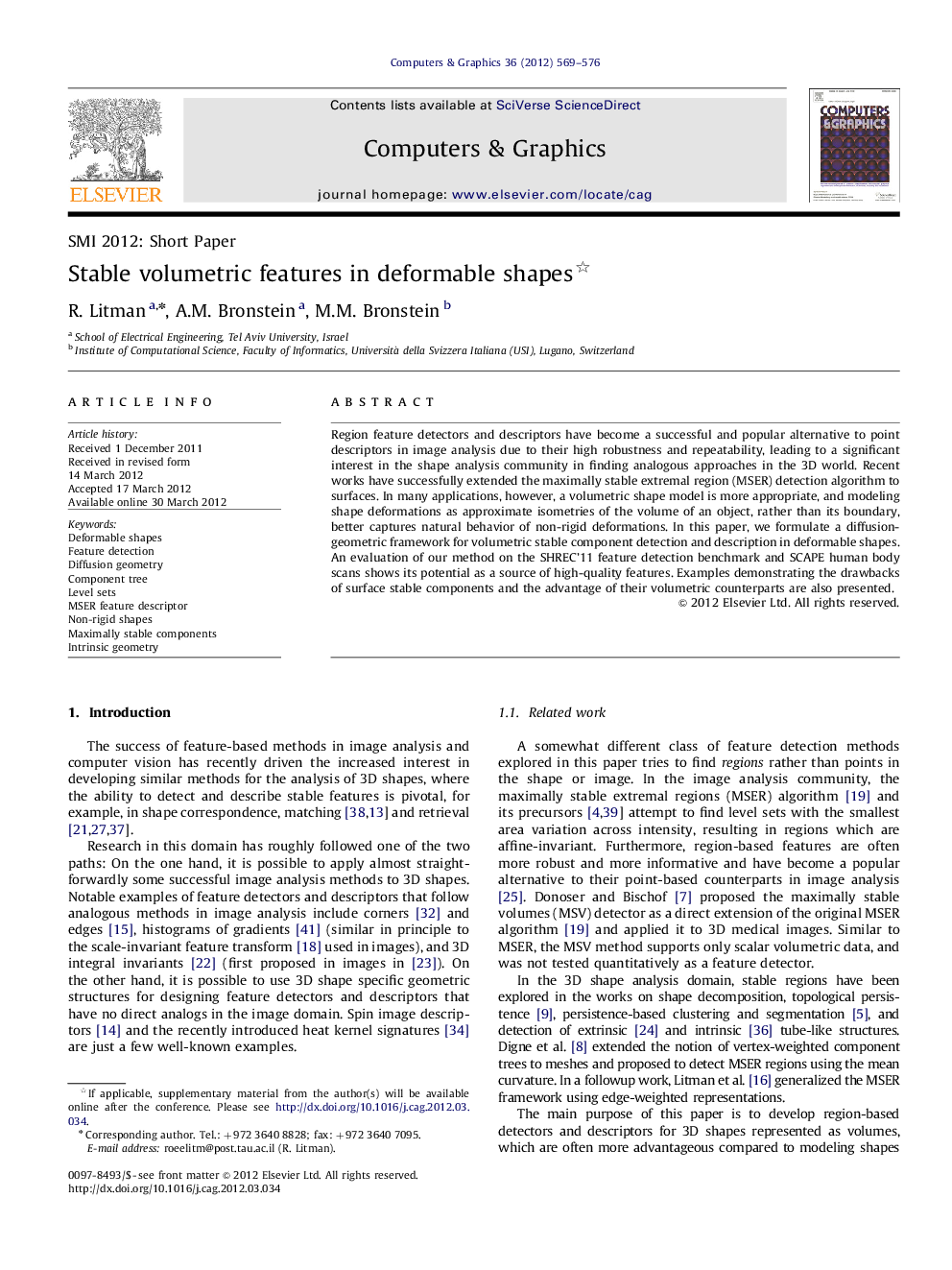| Article ID | Journal | Published Year | Pages | File Type |
|---|---|---|---|---|
| 442651 | Computers & Graphics | 2012 | 8 Pages |
Region feature detectors and descriptors have become a successful and popular alternative to point descriptors in image analysis due to their high robustness and repeatability, leading to a significant interest in the shape analysis community in finding analogous approaches in the 3D world. Recent works have successfully extended the maximally stable extremal region (MSER) detection algorithm to surfaces. In many applications, however, a volumetric shape model is more appropriate, and modeling shape deformations as approximate isometries of the volume of an object, rather than its boundary, better captures natural behavior of non-rigid deformations. In this paper, we formulate a diffusion-geometric framework for volumetric stable component detection and description in deformable shapes. An evaluation of our method on the SHREC'11 feature detection benchmark and SCAPE human body scans shows its potential as a source of high-quality features. Examples demonstrating the drawbacks of surface stable components and the advantage of their volumetric counterparts are also presented.
Graphical abstractRegion feature detectors and descriptors have become a successful and popular alternative to point descriptors in image analysis due to their high robustness and repeatability, leading to a significant interest in the shape analysis community in finding analogous approaches in the 3D world. Recent works have successfully extended the maximally stable extremal region (MSER) detection algorithm to surfaces. In many applications, however, a volumetric shape model is more appropriate, and modeling shape deformations as approximate isometries of the volume of an object, rather than its boundary, better captures natural behavior of non-rigid deformations. In this paper, we formulate a diffusion-geometric framework for volumetric stable component detection and description in deformable shapes. An evaluation of our method on the SHREC'11 feature detection benchmark and SCAPE human body scans shows its potential as a source of high-quality features. Examples demonstrating the drawbacks of surface stable components and the advantage of their volumetric counterparts are also presented.Figure optionsDownload full-size imageDownload high-quality image (324 K)Download as PowerPoint slideHighlights► We present a diffusion-geometric framework for volumetric non-local feature detection. ► The process is invariant to non-rigid volume-preserving deformations. ► We argue that volumetric features better captures natural non-rigid deformations. ► Performance on the SHREC'11 dataset are Superior to surface based detector. ► A region-matching experiment is performed between the scans and synthetic datasets.
